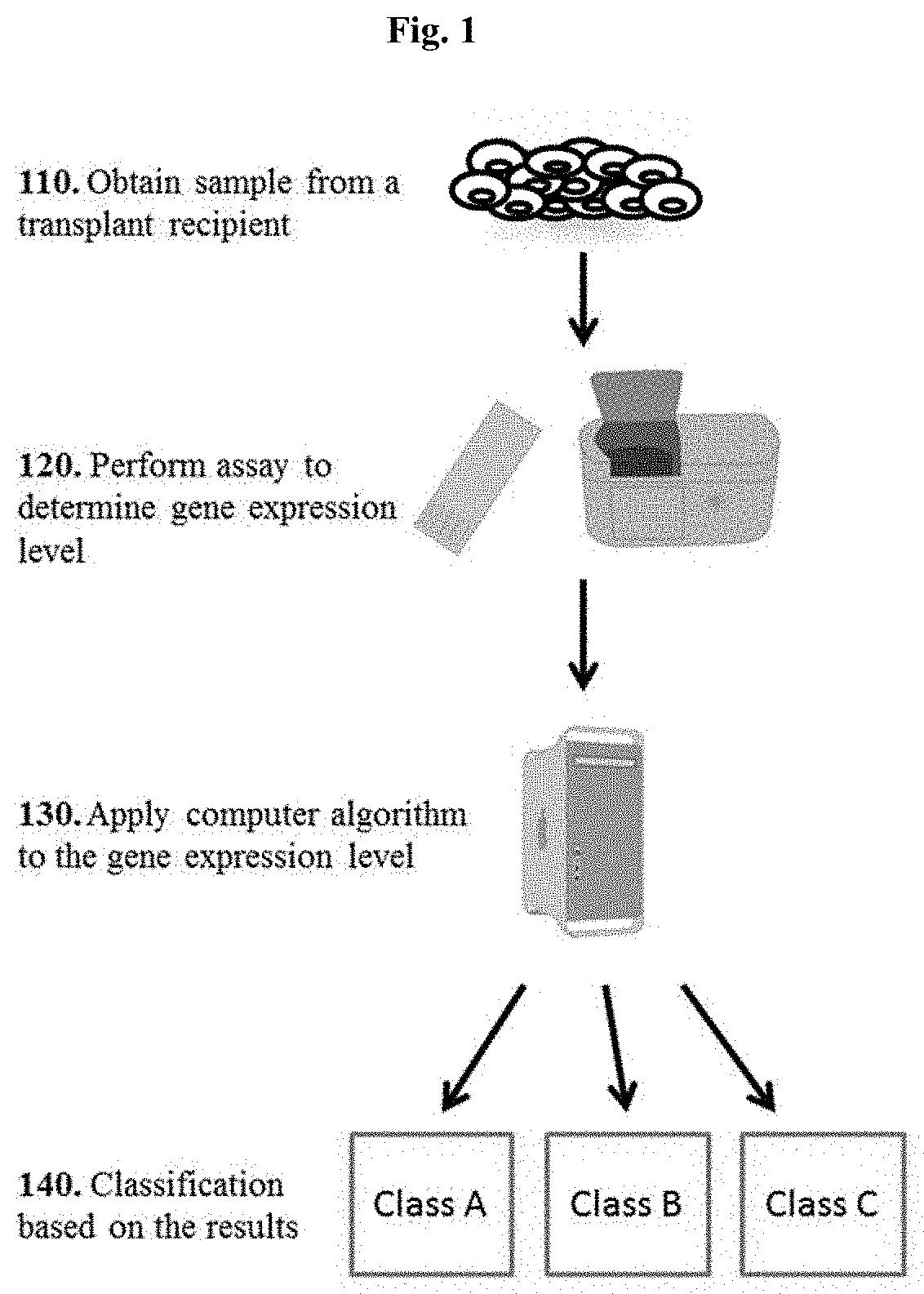Molecular Signatures for Distinguishing Liver Transplant Rejections or Injuries
a technology of liver transplant and molecular signature, which is applied in the field of molecular signatures for distinguishing liver transplant rejection or injury, can solve the problems of poor transplant survival in hcv-infected recipients, graft loss in some patients, and inaccurate organ biopsy results
- Summary
- Abstract
- Description
- Claims
- Application Information
AI Technical Summary
Benefits of technology
Problems solved by technology
Method used
Image
Examples
example 1
n Signatures to Distinguish Liver Transplant Injuries
[0102]Biomarker profiles diagnostic of specific types of graft injury post-liver transplantation (LT), such as acute rejection (AR), hepatitis C virus recurrence (HCV-R), and other causes (acute dysfunction no rejection / recurrence; ADNR) could enhance the diagnosis and management of recipients. Our aim was to identify diagnostic genomic (mRNA) signatures of these clinical phenotypes in the peripheral blood and allograft tissue.
[0103]Patient Populations: The study population consisted of 114 biopsy-documented Liver PAXgene whole blood samples comprised of 5 different phenotypes: AR (n=25), ADNR (n=16), HCV(n=36), HCV+AR (n=13), and TX (n=24).
[0104]Gene Expression Profiling and Analysis: All samples were processed on the Affymetrix HG-U133 PM only peg microarrays. To eliminate low expressed signals we used a signal filter cut-off that was data dependent, and therefore expression signals<Log2 4.23 (median signals on all arrays) in al...
PUM
| Property | Measurement | Unit |
|---|---|---|
| Time | aaaaa | aaaaa |
| Time | aaaaa | aaaaa |
| Time | aaaaa | aaaaa |
Abstract
Description
Claims
Application Information
 Login to View More
Login to View More - R&D
- Intellectual Property
- Life Sciences
- Materials
- Tech Scout
- Unparalleled Data Quality
- Higher Quality Content
- 60% Fewer Hallucinations
Browse by: Latest US Patents, China's latest patents, Technical Efficacy Thesaurus, Application Domain, Technology Topic, Popular Technical Reports.
© 2025 PatSnap. All rights reserved.Legal|Privacy policy|Modern Slavery Act Transparency Statement|Sitemap|About US| Contact US: help@patsnap.com


